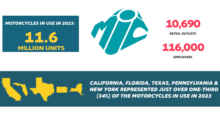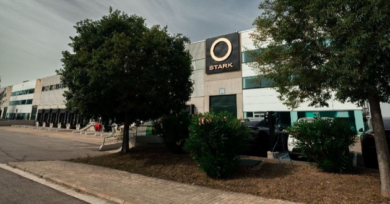Report: More than 1 in 3 bankers report recession in local economy
News release
Rural Mainstreet Economy Remains Very Weak:
February Survey Results at a Glance:
For a sixth straight month, the Rural Mainstreet Index fell below growth neutral.
Approximately 36.9 percent of bankers indicated their local economy was in a recession.
Bank CEOs reported an average annual cash rent for farmland of $221, down by approximately 15 percent from July 2015.
Only 2.2 percent of bankers expect a March Federal Reserve rate hike.
OMAHA, Neb. – While the Creighton University Rural Mainstreet Index rose for February, it remains weak, according to the monthly survey of bank CEOs in rural areas of a 10-state region dependent on agriculture and/or energy.
Overall: The Rural Mainstreet Index (RMI), which ranges between 0 and 100, increased to 37.0 from January’s 34.8.
“This is the sixth straight month the overall index has moved below growth neutral. Recent declines are the result of lower agriculture and energy commodity prices and downturns in manufacturing. Since June of last year, prices for farm products have fallen by approximately 8 percent, and fuels by roughly 22 percent,” said Ernie Goss, Jack A. MacAllister Chair in Regional Economics at Creighton University’s Heider College of Business.
Only 8.7 percent of bank CEOs reported their local economy was expanding while approximately 36.9 percent indicated their local economy was in a recession.
Farming and ranching: The farmland and ranchland price index for February climbed to 29.8 from January’s 23.9. This is the 27th straight month the index has moved below growth neutral.
As in previous months, there is a great deal of variation across the region in the direction and magnitude of farmland prices, with prices growing in some portions of the region. For example, Cameron Mathis with Tilden Bank in Creighton, Nebraska, reported, “I recently had two irrigated quarters of farm ground sell for $8,650 at auction.”
Bank CEOs reported an average annual cash rent for farmland, excluding pastureland, of $221. This is down by approximately 15 percent from July 2015.
On the other hand, Jim Stanosheck, CEO of State Bank of Odell in Odell, Nebraska, indicated, “Irrigated cash rents moved higher.”
The February farm equipment-sales index climbed to 11.3 from January’s record low 7.0. “The strong U.S. dollar and global economic weakness have pushed grain prices down by 11 percent and slaughter cattle prices are 22 percent lower over the past 12 months. These weaker prices have discouraged farmers from buying additional agriculture equipment and have negatively affected the agriculture equipment dealers and manufacturers in the region,” said Goss.
Banking: The February loan-volume index decreased to 48.9 from last month’s 55.4. The checking-deposit index declined to 44.6 from January’s 55.5, while the index for certificates of deposit and other savings instruments dipped to 39.8 from 42.3 in January.
Regarding an interest rate change at the Federal Reserve’s March meetings, only 2.2 percent of the bank CEOs expect the Fed to raise rates while the remaining 97.8 percent anticipate the Fed’s rate setting committee, the FOMC, to leave rates unchanged.
Jeffrey Bonnett president of the Havana National Bank in Havana, Illinois, said, “As the Fed Funds future is showing no change through the first quarter of 2018, I would not think the Fed would be doing much with interest rates. At least I do not see data to justify an increase at this time.”
Hiring: Contrary to recent months, bankers reported that Rural Mainstreet businesses dropped workers from their payrolls over the last month. The hiring index decreased to 48.9 from 51.2 in January. “Weakness in the farm and energy sectors is spilling over into the broader Rural Mainstreet job market,” said Goss.
Confidence: The confidence index, which reflects expectations for the economy six months out, moved slightly higher to 30.4 from 29.4 in January, indicating a very pessimistic outlook among bankers. “As in previous months, bankers see few factors pointing to improvements for the Rural Mainstreet economy,” said Goss.
Home and retail sales: The February home-sales index jumped to a respectable 51.1 from 43.3 in January. The February retail-sales index moved to a still very weak 37.0 from 32.7 last month. “Home sales held up for the month, but rural retailers have yet to experience retail sales gains resulting from declines in fuel costs,” said Goss.
Each month, community bank presidents and CEOs in nonurban agriculturally and energy-dependent portions of a 10-state area are surveyed regarding current economic conditions in their communities and their projected economic outlooks six months down the road. Bankers from Colorado, Illinois, Iowa, Kansas, Minnesota, Missouri, Nebraska, North Dakota, South Dakota and Wyoming are included. The survey is supported by a grant from Security State Bank in Ansley, Neb.
This survey represents an early snapshot of the economy of rural agriculturally and energy-dependent portions of the nation. The Rural Mainstreet Index (RMI) is a unique index covering 10 regional states, focusing on approximately 200 rural communities with an average population of 1,300. It gives the most current real-time analysis of the rural economy. Goss and Bill McQuillan, former chairman of the Independent Community Banks of America, created the monthly economic survey in 2005.
Colorado: Colorado’s Rural Mainstreet Index (RMI) advanced to 43.9 in February from 37.1 in January. The farmland and ranchland price index soared to 56.1 from January’s 17.2. Colorado’s hiring index for February rose to 54.3 from January’s 51.9.
Illinois: The February RMI for Illinois declined to 32.5 from 33.6 in January. The farmland-price index climbed to 21.2 from January’s 19.9. The state’s new-hiring index fell to 45.5 from last month’s 49.2.
Iowa: The February RMI for Iowa advanced to 40.4 from January’s 38.2. Iowa’s farmland-price index for February increased to 45.9 from 36.0 in January. Iowa’s new-hiring index for February dipped to 54.5 from 55.1 in January.
Kansas: The Kansas RMI for February improved to a still weak 37.5 from January’s 33.9. The state’s farmland-price index for February sank to 28.1 from January’s 36.0. The new-hiring index for Kansas declined to 48.0 from 49.5 in January.
Minnesota: The February RMI for Minnesota jumped to 39.2 from January’s 35.5. Minnesota’s farmland-price index increased to 30.1 from 18.2 in January. The new-hiring index for the state inched up to 48.7 from last month’s 48.6.
Missouri: The February RMI for Missouri climbed to 39.2 from 35.0 in January. The farmland-price index advanced to a still very weak 37.9 from January’s 30.5. Missouri’s new-hiring index declined to 51.5 from January’s 53.0.
Nebraska: The Nebraska RMI for February expanded to 37.0 from 35.0 in January. The state’s farmland-price index grew to 29.8 from January’s 19.8. Nebraska’s new-hiring index dipped to 48.6 from 49.2 in January.
North Dakota: The North Dakota RMI for February slumped to a regional low of 14.3 from January’s 17.3, also a regional low. The farmland-price index rose to 15.6 from 11.2 in January. North Dakota’s new-hiring index declined to 11.8 from January’s 21.3.
South Dakota: The February RMI for South Dakota increased to 40.3 from 39.0 in January. The farmland-price index rose to 48.9 from 43.0 in January. South Dakota’s new-hiring index fell to solid 55.6 from January’s 57.6.
Wyoming: The February RMI for Wyoming slipped to 32.1 from January’s 32.9. The February farmland and ranchland-price index plunged to 14.6 from 18.7 in January. Wyoming’s new-hiring index slumped to 43.1 from January’s 48.7.








